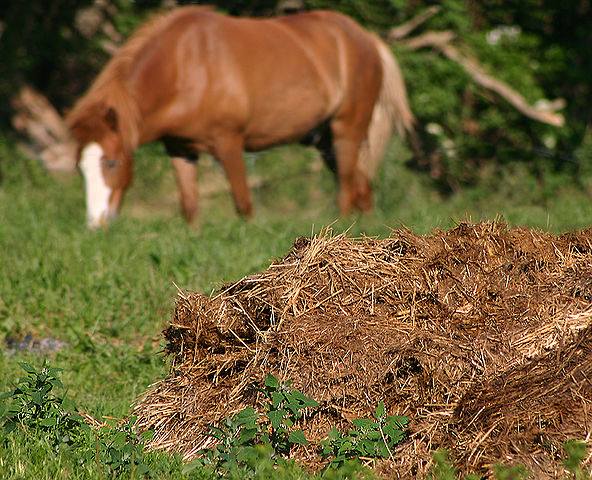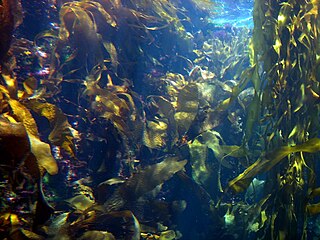Excitement spread across social media recently with the announcement that a genetically engineered tomato, creatively named “The Purple Tomato” is now available for home gardeners. Gardeners, plant scientists, and others rejoiced at the news that a purple tomato engineered with genes from a snapdragon to boost the plant pigment anthocyanin is now available for home gardeners to purchase. But why were people so excited? And what does this mean?

The Purple Tomato: What is it and why is it exciting and important?
The Purple Tomato was developed by a company called Norfolk Healthy Produce. The company was founded by Professor Cathie Martin (and other scientists) who is a professor at the University of East Anglia and a group leader at the John Innes Centre in the UK. On February 6, 2024 they announced that seeds were available to home gardeners in the US after clearing regulatory approval hurdles by the USDA, EPA, and FDA to assure that it is safe for human consumption, for growth in US without safety containment measures, and that it does meet its claims of added nutrients. Read more about the US regulatory process here.
For all the tomato aficionados out there, The Purple Tomato is an indeterminate cherry tomato. Indeterminate means that the plant doesn’t stop growing as long as it is healthy and will produce a “vine” that needs to be staked or trellised off the ground. Production of fruits continues throughout the season starting at the bottom of the plant and going up as long as it is healthy. Of course, it is a cherry tomato so you’ll have hundreds or thousands of tiny fruits to pick through the season. Some gardeners love growing cherry tomatoes. Others hate it for that fact. So you win some, you lose some.

Read more on indeterminate vs. determinate here.
The tomato contains two genes from snapdragon flowers that boost anthocyanin production in the tomatoes. Anthocyanins are the plant pigments responsible for blue and blue-purple colors in plants. And they are shared across all plants with these blue and blue-purple colors, so the addition of purple pigments from a flower isn’t too out of the ordinary since tomatoes already contain similar pigments. (The reddish violet/crimson color of plants in the Amaranthaceae family (beets, amaranth, chard) are from betalin pigments, not anthocyanins, FYI.) Most plant pigments actually have the added bonus of also being highly beneficial for human health as most of them are antioxidants and have other health benefits. The incorporation of anthocyanins boost the nutrient quality of tomato since anthocyanins are considered strong antioxidants. Studies also implicate anthocyanins in reducing blood pressure and heart disease, preventing neurological disease, and slowing cancer growth due to the reduction of free radicals that can damage DNA.

Now, anthocyanins in tomatoes are not new. Many hybrid and heirloom varieties of tomatoes contain anthocyanins. The tomatoes that already contain anthocyanins are the tomatoes that are often considered “purple” or “black” by seed companies and home gardeners. Like ‘Cherokee Purple’, ‘Black Beauty’, and ‘Black Krim’. However, the anthocyanins in these tomatoes are generally found in low quantities as they are only found in the skin and or the flesh just under the skin. What makes “The Purple Tomato” novel is that it is the only tomato that has the anthocyanin pigment in both the skin and throughout the tomato. Seeing pictures of the tomato, the vibrant purple color goes through the entire tomato and is striking. (It also doesn’t hurt that purple is my favorite color). Due to this purple color throughout the tomato, the fruits have a much higher concentration of anthocyanins than existing cultivars.
Another thing that excites me about The Purple Tomato is that the company claims that is an inbred/open pollinated variety. Meaning that home gardeners can save the seeds from year to year and the anthocyanin traits will continue to be present. This also signals a departure from normal genetically engineered seeds where the traits aren’t as persistent and seed saving isn’t allowed. The company does have some terms and conditions about not selling seeds (from the ones you buy or likely from any you save) and not using them to breed other varieties. But gardeners are free to save seeds and share fruits, plants, and seeds with your local community.
“GMOs” and home gardening
Despite what many people may think, until the release of this tomato there really weren’t any genetically engineered plants available to home gardeners. This marks the first time that a plant has received approval from the US government agencies that control the release of genetically engineered plant for sales directly to home gardeners. Most of the genetically engineered plants have been developed for and are available only to commodity crop (corn, soy, cotton, etc.) and select horticultural crop (papaya, some select squashes, and now Arctic apple) farmers. There’s a highly regulated process and contract procedure for farmers to obtain the seeds or plants that just isn’t practical or cost-effective for the plant developers to market to or make seeds for home gardeners.

We’ve written several times about how, until now, there really hasn’t been genetically engineered seeds available to home gardeners, despite what some seed companies would have you believe (here and here). There has unfortunately been a lot of confusion for home gardeners thanks to misguided and/or deceptive marketing practices by certain (heirloom) seed companies that labeled their “Non-GMO certified” seeds and preached about the dangers of genetic engineering to sell more of their seeds even though there have not (until now) been any “GMO” seeds available for companies to even sell to home gardeners. Unfortunately that deceptive marketing created enough fear and fervor that most seed companies had to start labeling their seeds “Non-GMO” just to preserve their sales and cut down on harassment from folks on social media trying to “call them out” for selling GMO seeds.
Not until the release of “The Purple Tomato” has there been a home garden seed that could be labeled “GMO” and warrant companies needing to label something as non-GMO. But still it is only one plant, so is it really necessary? Or is it just a marketing tactic?
Purple Tomato Reception
In cruising through the comment section on articles discussing the new tomato, I’ve been pleasantly surprised to see the positive response that it is receiving from the public. There are lots of comments excited about the prospect of a nutrient-dense genetically engineered crop, lots of excitement about buying the seed, and even excitement about the super purple color of the tomato. The few negative comments about GMOs being “bad” have gotten a lot of pushback. I don’t think this would have happened 5 or 10 years ago.
Of course, some of the pushback is a little misguided. Statements like “all plants are GMO” show a similar lack of understanding of what is actually happening, even though it is offered in good faith. Yes, humanity has guided and shaped the genetics of all of the plants we eat over the centuries and many plants have therefore been “genetically modified” by humans. But genetic engineering is a more rigorous and scientific process. This is also one of the reasons why scientists and government agencies prefer the term “genetically engineered” or “bioengineered” to GMO or genetically modified to clear up confusion.
It does seem like the tide has shifted on public acceptance of genetic engineering where until recently many people viewed the technology with skepticism and fear, thanks mainly to misunderstanding and marketing.
Much of the fear and distrust of genetically engineered plants have been around the addition of genes to make crops resistant to certain herbicides, to produce natural immunity to insects, and other traits to increase yields. Many have wrongly assumed or claimed that this has resulted in increased application of herbicides. While application of some herbicides like glyphosate has increased, it has been at the reduction of much more dangerous herbicides. These crops have often been developed and controlled by large chemical companies that, perhaps not totally incorrectly, the general public distrusts. Plus, unintended consequences like herbicide resistant weeds have caused issues.
But the new Purple Tomato goes beyond this and I think is applauded for many reasons. One – it was made solely to boost nutrition. While there have been previous (mostly unsuccessful) efforts to do this in crops (see the story of Golden Rice), this is really the first time it has been aimed at home gardeners. Two – it isn’t one of those “big scary corporations” doing it. It is a company started by academics to promote plant science and health. Three – while the plants are patented, there aren’t strict and secretive agreements against seed saving and sharing. And four – the express purpose of the plant is to increase the healthy qualities of the plant.
In conclusion
It seems like many people are excited about this new genetically engineered tomato on the market. I know that I am. It seems like the public at large is accepting and excited by this new health-boosted tomato and the technology used to make it.
I know I’ve ordered my seeds, and many others have as well. The seeds aren’t cheap, $20 for 10, but the process to make them isn’t cheap either. I’m looking forward to trying them out in my own garden.
Disclaimer: No payment or reward was received for this article promoting the Purple Tomato and I have no affiliation with the company. Norfolk Healthy Produce didn’t even know it was being written. They probably don’t even know who the Garden Professors are and they definitely don’t know who I am. That being said, if they want to reach out with some free seeds or swag, I wouldn’t be mad at them.






 “Certified organic” means that the producers practices have been certified to meet the requirements laid down by a certifying agency. A certifying agency could be a non-profit or a state department of agriculture. The requirements and practices vary from entity to entity.
“Certified organic” means that the producers practices have been certified to meet the requirements laid down by a certifying agency. A certifying agency could be a non-profit or a state department of agriculture. The requirements and practices vary from entity to entity. “
“
















